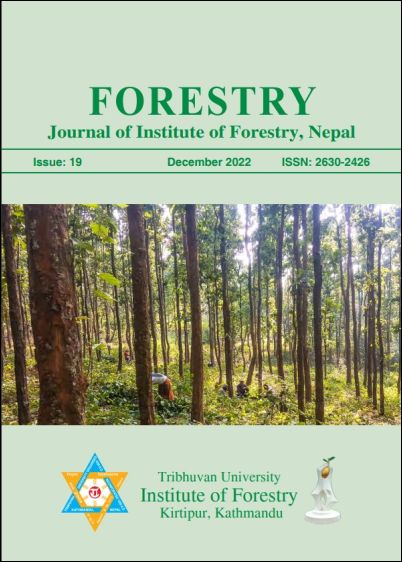Synergy between Carbon and Biodiversity in Restored Forests: A case from leasehold forestry of Nepal
DOI:
https://doi.org/10.3126/forestry.v19i01.55700Keywords:
Carbon, Diversity, Leasehold forest, Nawalpur, Restoration, Trade-offAbstract
Studies on forest carbon stock have increased in Nepal, especially in community forests, as a result of worldwide recognition of the role of sustainable forest management in climate change mitigation. Leasehold forests, which contribute greatly to reviving degraded forests and livelihoods of pro-poor communities, however, have been sidelined from such studies. This study assessed the biomass carbon stock of leasehold forests and its relationship with tree diversity in the Nawalpur district in Nepal. The concentric sample plots with subplots were laid, measuring trees (8.92m radius), saplings (5.64m radius), and regeneration (1m radius), in eleven leasehold forests. Plant diversity was calculated using the Shannon–Wiener diversity index (H’) to assess forest conditions. The average carbon stock was found to be 11.40 t/ha, where the stock varied by nature of intervention. The average carbon stock in non-tree-based restoration sites was estimated to be 3.81 t/ha, which was significantly lower than in tree-based restoration sites (14.49 t/ha). A total of 37 species of trees were recorded from 45 sample plots distributed across eleven LFUGs. Spearman’s rank-order correlation coefficient between forest carbon stock and diversity index was 0.613, which shows a strong positive correlation and was significant at a 99% confidence interval. There was a synergy between biomass carbon stock and tree diversity because communities were protecting the existing tree species and planting multipurpose trees to meet their need for forest products. The study concludes that leasehold forestry contributes positively to the enhancement of carbon stock and tree diversity.
Downloads
Downloads
Published
How to Cite
Issue
Section
License
© Tribhuvan University, Institute of Forestry




